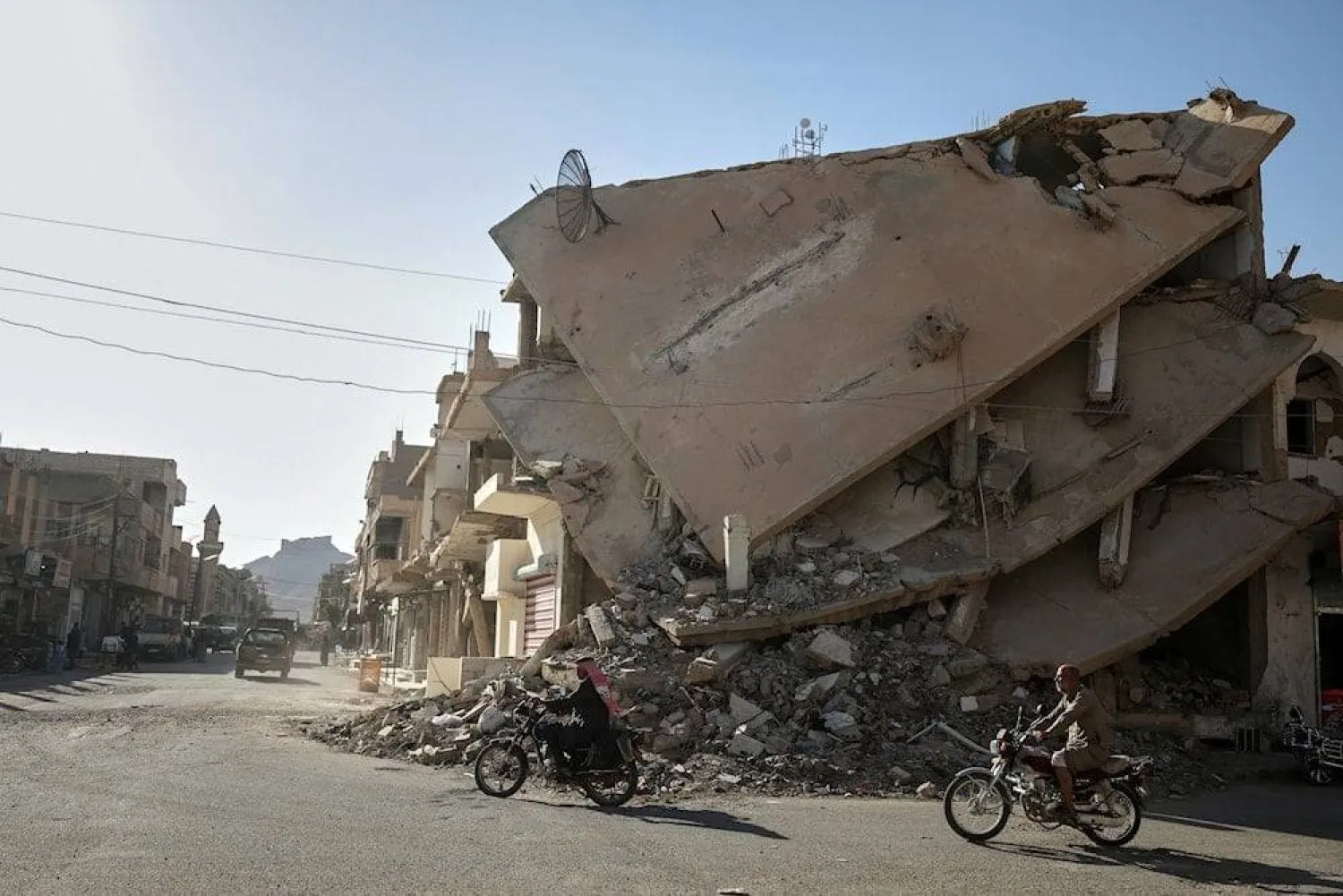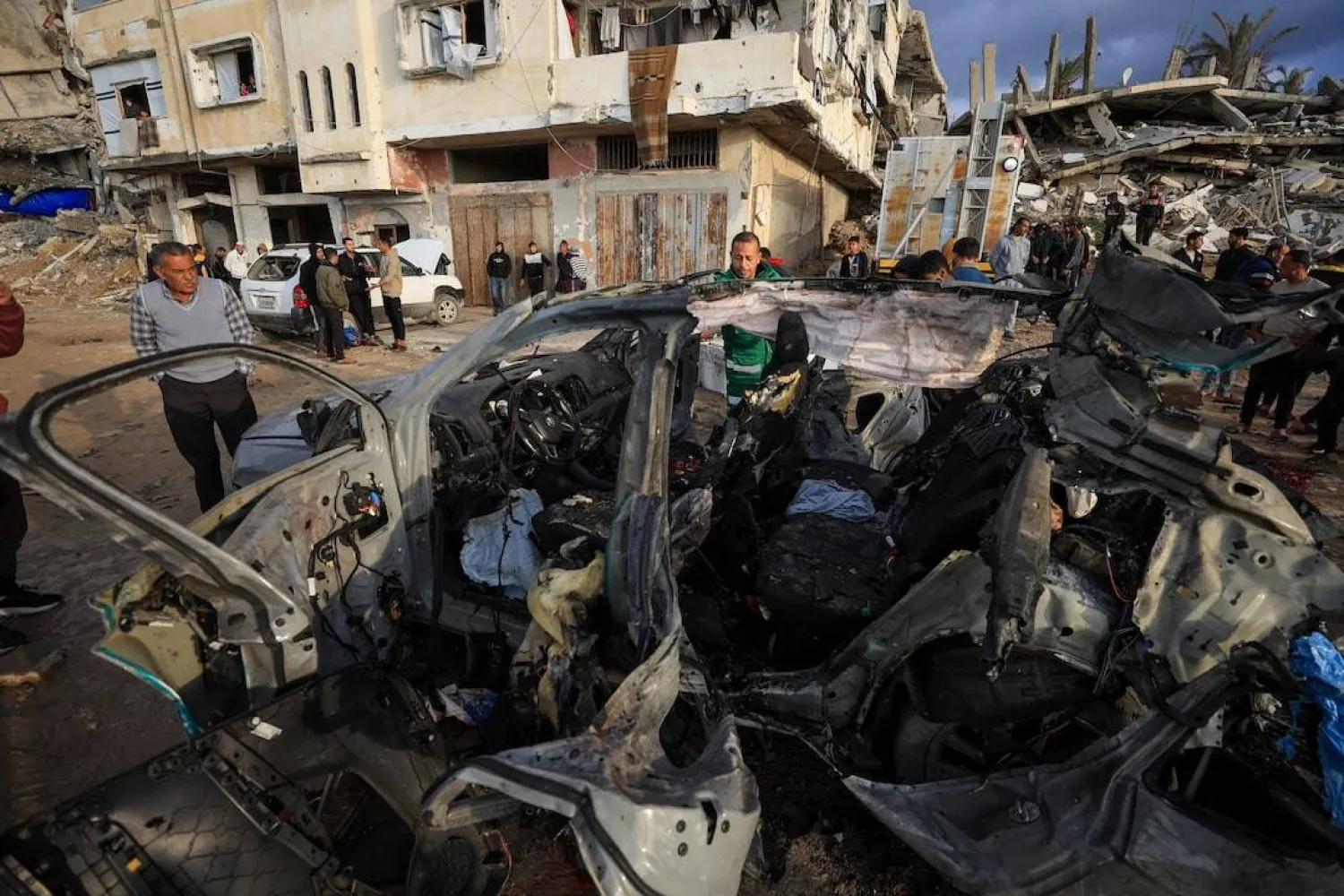Kurdish-led fighters advanced slowly Saturday under the cover of US-led coalition air power in Syria's northeast. Intense clashes with ISIS militants took place around a prison where thousands of extremists were held, officials said.
Fighting broke out Thursday night when ISIS unleashed its biggest attack in Syria since the fall of its so-called “caliphate” three years ago. More than 100 militants assaulted the main prison holding suspected extremists in the northeastern city of Hasakeh, sparking a battle with US-backed Kurdish fighters that has so far left dozens dead.
The Kurdish-led Syrian Democratic Forces lost 17 fighters killed and 23 wounded since the fighting began, spokesman Farhad Shami tweeted Saturday. Dozens of ISIS gunmen were also killed.
Despite their defeat in Syria nearly three years ago, ISIS sleeper cells have carried out deadly attacks against SDF as well as government forces on the west bank of the Tigris River in eastern Syria.
The group’s territorial control in Syria and Iraq, where they once declared their “caliphate” was crushed by a years-long US-backed campaign. But its fighters continued with sleeper cells that have increasingly killed scores of Iraqis and Syrians in past months.
The US-backed Kurdish-led Syrian Democratic Forces brought more reinforcements into Hasakeh in an attempt to regain control of areas taken by ISIS, residents said. More civilians fled the areas of fighting as sounds of explosions echoed in the city and black smoke billowed from the Gweiran Prison area on the southern edge of Hasakeh.
Hasakeh Gov. Ghassan Khalil told Syrian state media that some 4,000 civilians have fled to areas controlled by Syrian government forces in the city and its suburbs. He told state TV that authorities set up three shelters for the displaced and mosques were also asked to open their doors for those who were forced to leave their homes.
Hasakeh-based journalist Adnan Hassan said in the early afternoon, a large SDF force consisting of scores of fighters, Humvees and vehicles carrying heavy machineguns arrived in the areas to boost the anti-ISIS operations.
SDF fighters “succeeded in thwarting the attempt to free the prisoners but it is not clear when they will have the situation under full control,” Hassan said.
Gweiran Prison is the largest of around a dozen facilities run by US-backed Syrian Kurdish forces holding suspected ISIS fighters. Gweiran holds more than 3,000 inmates, including ISIS commanders and figures considered among the most dangerous.
“The battles are taking place on the edge of the prison,” SDF spokesman Siamand Ali told The Associated Press, adding that most of the prison is under their control apart from a small part that is held by rioting prisoners. He added that fighting is also ongoing in the nearby Zuhour neighborhood, where ISIS fighters were holed up.
Ali said SDF fighters and US-led coalition aircraft targeted a technical academy building where dozens of ISIS "terrorists took positions.” Ali said SDF fighters are advancing slowly in order to protect the lives of civilians as ISIS gunmen are holed up in alleys and in residential homes.
He said the SDF's elite anti-terrorism unit and commandos are leading the operations that intensified Saturday night in neighborhoods east of the prison, where scores of ISIS fighters are holed up. He said SDF officials are at the same time trying to convince rioting detainees to surrender, because a confrontation inside the prison "could have grave consequences” due to the large numbers of detainees.
Ali said some 45 ISIS gunmen were killed in the fighting and dozens of prisoners who fled were recaptured.
The Britain-based Syrian Observatory for Human Rights, an opposition war monitor, said that since Thursday night, 89 people have been killed, including 56 IS gunmen, 28 Kurdish fighters and five civilians. The Observatory added that SDF fighters were using loudspeakers to call on ISIS fighters to surrender but the extremists refused.
On Friday, the SDF’s top military commander, Mazloum Abadi, said ISIS mobilized “most of its sleeper cells” to organize the prison break.
The militants, armed with heavy machine guns and vehicles rigged with explosives, attacked Thursday evening, aiming to free their comrades.
Pentagon press secretary John Kirby said Friday the US used airstrikes to support the SDF.
On Friday an SDF spokesman said they recaptured 104 militants who escaped from the prison. But he said the total number who had broken out was not determined.
The ISIS group claimed responsibility for the prison break on its Aamaq news service Friday, describing it as ongoing. Freeing convicts and imprisoned comrades has been a main tactic of the group. During their 2014 surge that overwhelmed territory in Iraq and Syria, ISIS carried out multiple prison breaks.
At its height, the ISIS held about a third of both of Iraq and Syria. The ensuing war against them lasted several years, killed thousands, and left large parts of the two neighboring countries in ruins. It also left US-allied Kurdish authorities in control of eastern and northeastern Syria, with a small presence of several hundred American forces still deployed.









